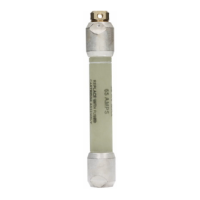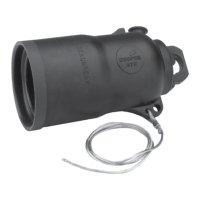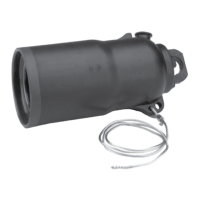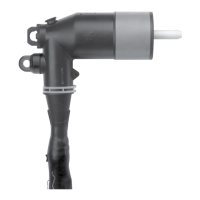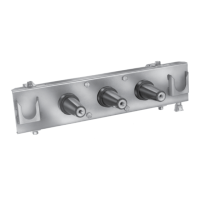DeltaCalc feature
The CL-7 Multi-Phase (MP) control opens up new
applications unavailable with individual single-phase controls.
The single control now has access to the metering and
phasor information from all connected voltage regulators.
This measured data can be used to calculate metering
values unavailable on single-phase connected controls,
without the addition of external metering transformers.
DeltaCalc settings
The DeltaCalc settings are accessible using the control
HMI or through ProView NXG software. Since DeltaCalc
is available only on the CL-7 MP control, the settings are
associated with the other control multi-phase settings.
Through the control HMI, FC 212 is used to select the
DeltaCalc Mode. When the DeltaCalc feature is enabled,
the control will determine whether the control is connected
to an open or closed delta configured system based upon
the number of VRs Configured (FC 202) and the System
Configuration setting (FC 41). There are three options for the
DeltaCalc parameter (Off, Basic, and Advanced), which are
explained below.
DeltaCalc settings for open delta
For open delta configured systems, the DeltaCalc setting
parameter of Off will result in traditional independent
regulation of phases A and C without consideration of phase
B voltages. The parameter settings of Basic and Advanced
both result in the same voltage regulator operations as
described in the next section.
Open delta voltage regulation
As an example, Figure43 shows the connection of two
Type B voltage regulators connected in an open delta
configuration. Similar operations as described here will also
occur when DeltaCalc is applied to Type A regulators. It is
clear in the figure that voltages are known between phase A
and phase B. The voltages are also known between phase C
and phase B. The load voltages are measured using control
windings (S2 to G); the source voltages are determined with
the addition of measured voltages between S4 and G or a
source voltage calculation.
Figure43. Two type B regulator connected in an open-
delta
What would not traditionally be known when regulators are
connected in open delta is the voltages between phases
A and C. The DeltaCalc feature uses the known values and
phasor math to calculate the phase A to C voltage. With this
information, the control will make decisions about operating
the voltage regulators to regulate the A to C voltage.
When a determination has been made that regulation
is needed for A to C, the control will determine which
connected voltage regulator is best able to affect regulation.
The operation will then occur on one of the voltage
regulators to bring the A to C voltage back into band. The
MP control settings for VR3 (set voltage, bandwidth, time
delay, LDC resistance, and LDC reactance) will be used for
A to C regulation.
Open delta load amps
With the open-delta systems there has been no method of
measuring the load current of the open phase. Using the
DeltaCalc feature, the open phase load current is calculated
based upon the known measured values of the adjacent
phases.
Close delta voltage regulation
Figure44 shows the connection of two Type B voltage
regulators connected in a closed delta configuration. This
figure is being used to illustrate how the DeltaCalc feature
operates when applied to voltage regulators connected in a
closed delta configuration. Similar operations as described
here will also occur when DeltaCalc is applied to Type A
regulators.
For closed delta connected regulators, without the
DeltaCalc feature, reverse power regulation has presented
a problem. Figure44 illustrates the problem. It can be seen
in the figure that reverse regulation requires the control to
have knowledge of the voltages between the adjacent S
137
INSTALLATION, OPERATION, AND MAINTENANCE INSTRUCTIONS MN225003EN April 2018
CL-7 Voltage Regulator Control

